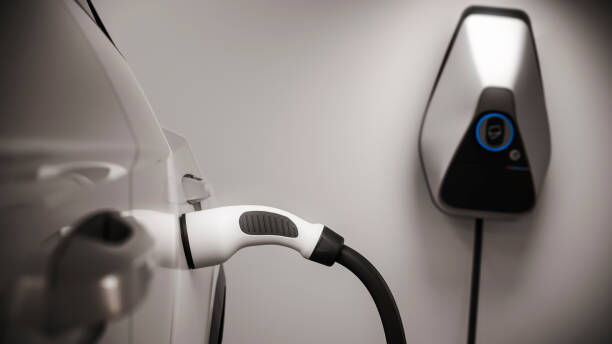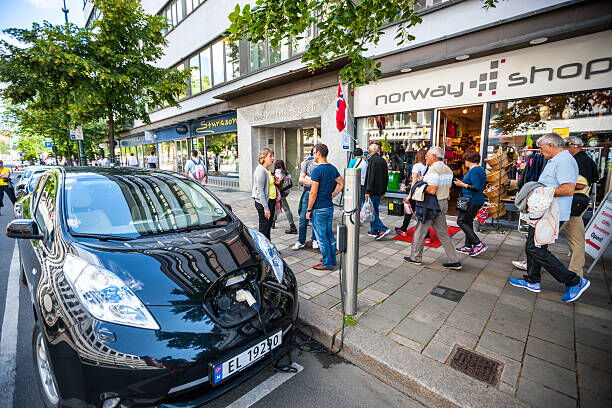As electric vehicles (EVs) continue to grow in popularity, more drivers are asking a simple but important question: Where should I charge my EV—and which option is the most cost-effective?
From home-based setups to public charging stations, EV owners have several options for keeping their battery-powered cars on the road. However, the cost of charging can vary significantly depending on where and how you charge.
In this article, we’ll break down the main charging options, analyze electricity rates across the U.S., and compare the costs of home charging versus public charging stations. Whether you're a new EV owner or considering the switch, this guide will help you make the most economical choice.

There are four primary ways to charge an electric vehicle:
This is the simplest and slowest method—commonly referred to as "trickle charging." It uses a standard three-pin household outlet to supply power directly to your EV.
While it requires no special installation, trickle charging is extremely slow. You’ll typically need to leave your vehicle plugged in overnight—or even longer—for a full charge. It’s also not recommended as a long-term or primary charging solution, as standard outlets aren't designed to deliver high current for extended periods.
Still, if you’re not in a rush and already have an outdoor plug (or can run a cable through a window), this method can be useful in a pinch.
A much more efficient solution is installing a wall box charger at home. These Level 2 chargers deliver a higher voltage than standard outlets and can significantly reduce charging time.
While the upfront cost for equipment and installation varies, many regions offer grants or tax incentives to help offset these expenses. Once installed, a home wall box provides reliable, convenient, and cost-effective EV charging—right in your own driveway.
Public charging infrastructure is rapidly expanding, particularly in urban areas. These stations are generally found in parking garages, shopping centers, workplaces, and along highways.
There are typically two types of public chargers:
Level 2 Chargers – Slower but widely available and less expensive.
Level 3 or DC Fast Chargers – High-powered stations designed to recharge a battery in a fraction of the time.
While public chargers are ideal for longer trips or those without access to home charging, they can be significantly more expensive per kilowatt-hour (kWh).

As of February 2025, the average U.S. residential electricity rate is approximately $0.16 per kWh. However, rates vary widely depending on your location:
Hawaii: ~$0.41/kWh (highest)
California & Connecticut: ~$0.31/kWh
Washington: ~$0.11/kWh (lowest)
This range greatly influences the cost of charging at home.
Let’s consider a typical EV with a 40 kWh battery. Charging a completely depleted battery at the national average rate of $0.16 per kWh would cost $6.40. In Washington, it could be as low as $4.40, while in Hawaii, it may jump to $16.40.
For larger EVs with 100 kWh batteries, the cost scales accordingly—from $11 in Washington to $41 in Hawaii, with an average around $16 nationally.
EVs typically deliver 3 to 4 miles per kWh. That translates into:
Cost per mile: Around $0.05 on average
Lower in states with cheaper electricity
Even lower with time-of-use (TOU) plans that offer discounted rates during off-peak hours
The average American drives 13,489 miles per year. Based on average efficiency and electric rates:
Home Charging Cost Range: $506 – $720 annually
Compare to gas-powered vehicles: $1,600 to $2,100 annually (depending on fuel efficiency and local gas prices)
For most drivers, charging at home offers significant savings over both public charging and traditional fueling.
While public EV chargers offer convenience—especially during travel—they come with higher costs.
Typical rate: $1 to $5 per hour
Average per-kWh cost: $0.20 to $0.25
Full charge (40 kWh): $8 to $10
These chargers are slower, so charging times may vary depending on your EV’s capabilities and current battery level.
Designed for speed, delivering up to 80% charge in under an hour
Cost per kWh: $0.40 to $0.60
Full charge (40 kWh): $16 to $24
Some providers charge by the minute instead of by the kWh
DC fast charging is ideal for long road trips or emergency top-ups but is generally not cost-effective for everyday use.
Let’s break down how much it would cost to rely solely on public chargers for 13,489 miles of annual driving.
Total yearly cost: $770 to $963
Still cheaper than gasoline, but up to 80% more expensive than home charging
Yearly cost: $1,540 to $2,300
Similar to—or even more expensive than—gasoline for some vehicles
In most cases, frequent reliance on fast chargers wipes out the cost benefits of owning an EV.
If you're looking to make the most out of your EV investment, here are some strategies to keep charging costs low:
Investing in a Level 2 home charging station is the most reliable and cost-effective option, especially if you qualify for rebates or tax credits.
Check if your utility offers TOU pricing and charge during off-peak hours—often late at night—when electricity rates are significantly lower.
When public charging is necessary:
Use Level 2 chargers when time allows
Avoid excessive reliance on DC fast charging unless required
Take advantage of free charging stations offered at some retail locations or workplaces
Track your charging history with mobile apps or your EV’s software to identify patterns and spot areas for savings. Some utilities and charging networks also offer cost calculators.
While public chargers are essential for road trips and urban convenience, home charging is overwhelmingly the most economical choice for EV drivers. With electricity rates averaging $0.16/kWh and the ability to take advantage of off-peak rates, charging at home can reduce annual transportation costs by thousands of dollars compared to gasoline or public EV charging.
By investing in a home charger and optimizing your charging habits, you can enjoy the benefits of electric driving without the financial sting.
Whether you're already behind the wheel of an EV or planning your transition, understanding your charging options is key to maximizing value—and minimizing cost.